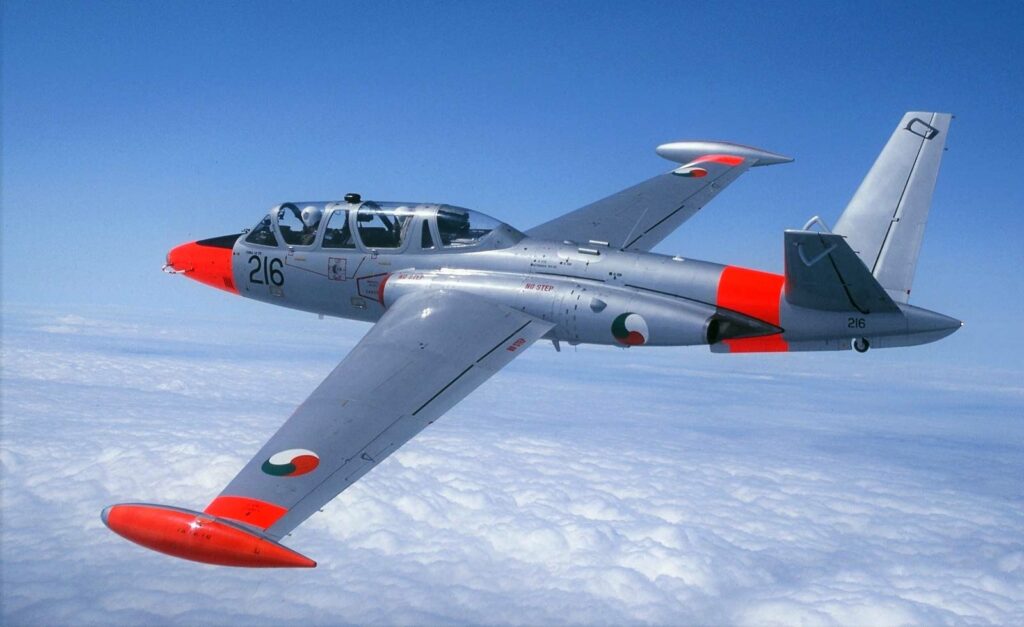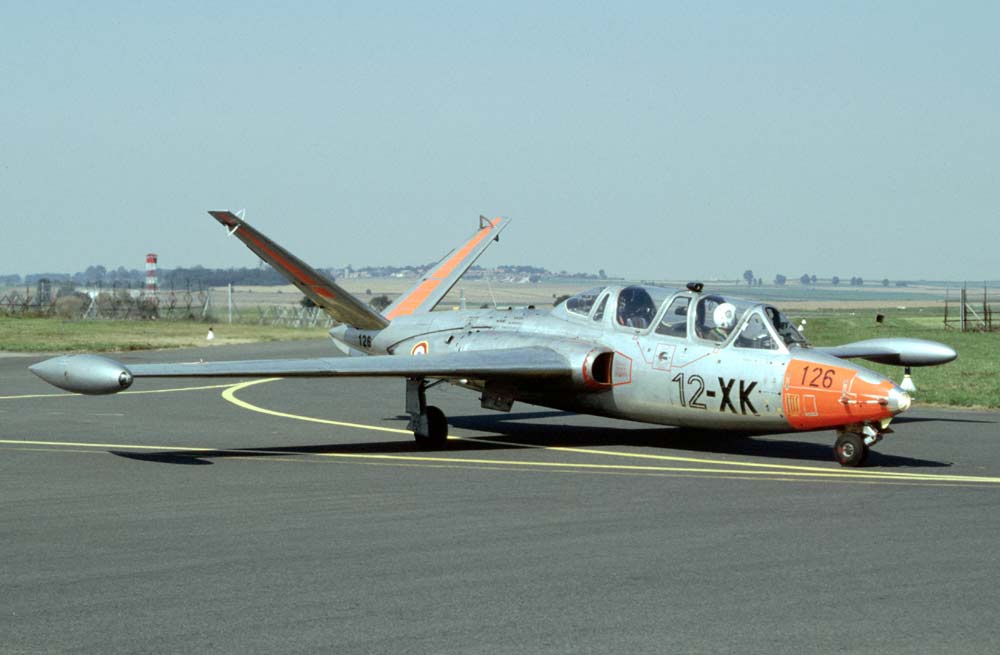The Potez CM.173 Super Magister: An advanced variant of the Fouga Magister, designed for improved training efficiency and aerobatic capability.
In Brief
The Potez CM.173 Super Magister was a jet-powered trainer aircraft, envisioned as an advanced version of the renowned Fouga Magister. It was designed to offer enhanced performance, including greater speed, better maneuverability, and increased range, catering to more advanced pilot training requirements. The aircraft featured a distinctive butterfly tail and a side-by-side seating arrangement, facilitating an effective training environment. It was equipped with upgraded engines and aerodynamic refinements to improve its flight characteristics. Although it didn’t achieve widespread operational use, the CM.173 remains a notable development in the lineage of jet trainers, showcasing significant advancements in training aircraft design during its era.

History of the Development of the Potez CM.173 Super Magister
In the context of the 1950s and 1960s, military aviation was rapidly evolving, with jet-powered aircraft becoming the mainstay of air forces worldwide. There was a growing need for advanced trainers that could adequately prepare pilots for the high-performance jet fighters then entering service. The Potez CM.173 Super Magister was developed as an advanced derivative of the Fouga CM.170 Magister, which had already proven itself as an effective jet trainer.
The development program aimed to create an aircraft that retained the favorable handling qualities of the original Magister while introducing enhancements that would make it suitable for more advanced training missions and aerobatic performance. The project was initiated by Potez, a company that had taken over the Fouga brand, with the prototype of the CM.173 first taking to the skies in the early 1960s. Although it was a direct evolution of the Fouga Magister, the Super Magister featured several design and performance enhancements intended to extend its service life and utility.
Design of the Potez CM.173 Super Magister
The design of the Potez CM.173 Super Magister incorporated several advancements over its predecessor. It maintained the distinctive V-tail (butterfly tail) configuration, which was a hallmark of the original Fouga Magister, but included modifications to improve aerodynamic efficiency and aircraft performance. The airframe was adapted to accommodate more powerful engines, resulting in improved thrust and overall flight performance.
The cockpit was designed with a side-by-side seating arrangement, ideal for training purposes as it allowed easy communication between the instructor and the trainee. This setup also provided the trainee with a better field of view. The aircraft was constructed using light alloys, which offered a good balance between strength and weight, contributing to its agility and responsiveness.
The CM.173’s avionics and systems were modernized compared to the earlier Magister, incorporating improvements that enhanced its role as a trainer and its operational safety. Despite these advancements, the aircraft faced stiff competition from other contemporary trainers, which limited its adoption.
Performance of the Potez CM.173 Super Magister
The upgraded engines of the Potez CM.173 Super Magister provided a higher thrust-to-weight ratio, resulting in superior performance characteristics such as increased top speed, enhanced climb rate, and a higher service ceiling. These improvements made the aircraft an excellent platform for advanced aerobatic maneuvers and high-speed jet training, simulating the performance of frontline fighters.
The aircraft’s range and endurance were optimized for extended training missions, offering a comprehensive operational envelope for various training scenarios. The enhanced performance of the Super Magister allowed trainees to experience and adapt to the high-performance characteristics of contemporary fighter jets, preparing them effectively for transition to combat units.
Variants of the Potez CM.173 Super Magister
The CM.173 Super Magister itself was a specialized variant of the Fouga Magister line. While it maintained the core design philosophy of the original Magister, it was distinct in its performance capabilities and intended role. The CM.173 did not spawn further variants, as its development was somewhat curtailed by the evolving requirements of military training programs and the emergence of more advanced training aircraft.

Military Use and Combat of the Potez CM.173 Super Magister
The Potez CM.173 Super Magister was primarily intended for advanced training roles, preparing pilots for transition to high-performance jet fighters. While it was designed during a period when jet trainers were in high demand, the Super Magister did not see widespread adoption by military forces. Its operational use was limited, and it did not participate in combat operations. The aircraft served as a technological stepping stone, demonstrating advancements that would influence future trainer designs.
The Super Magister’s contributions were more technological than operational, providing valuable insights into training aircraft design and performance that would benefit subsequent aircraft development programs.
The Potez CM.173 Super Magister represents an interesting chapter in the history of military aviation, particularly in the field of pilot training. While it did not achieve widespread service, its development underscored the ongoing evolution of jet-powered trainers, highlighting the industry’s efforts to adapt to the rapidly advancing performance of fighter aircraft. The CM.173 remains a testament to the transitional era of jet flight training, showcasing the incremental advancements that have shaped modern pilot training methodologies and aircraft design.
Back to the Trainers section.